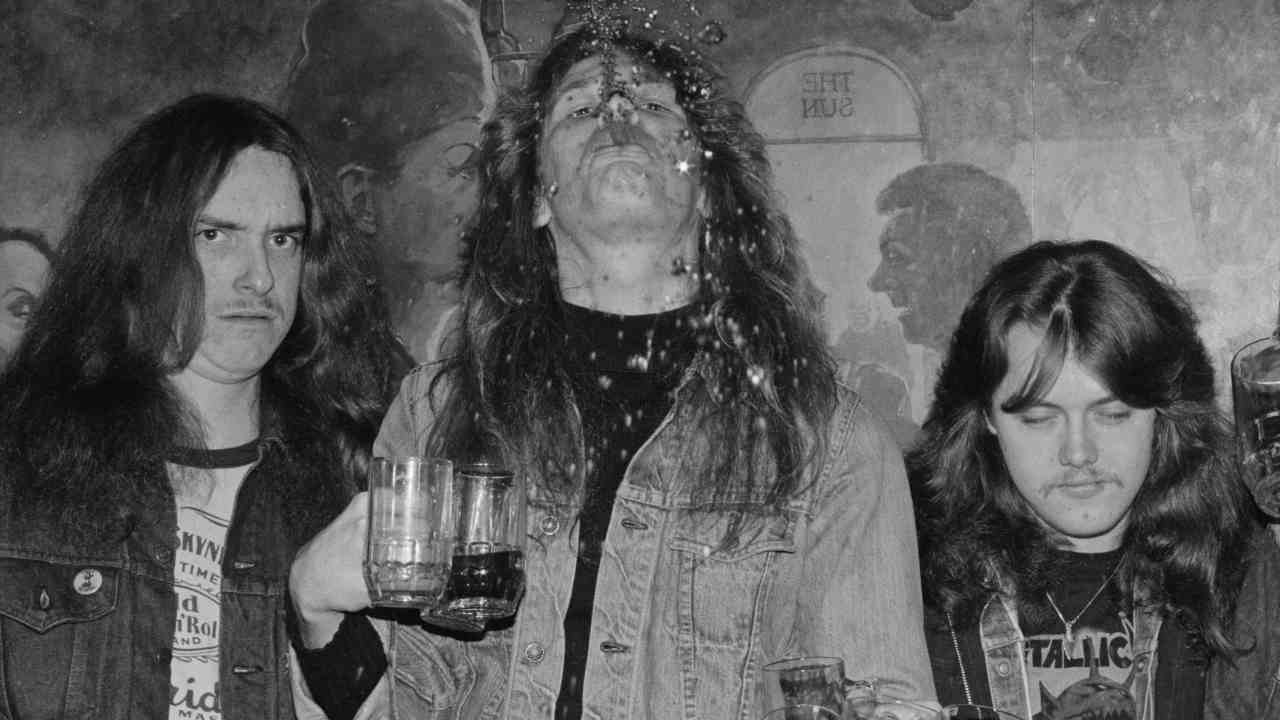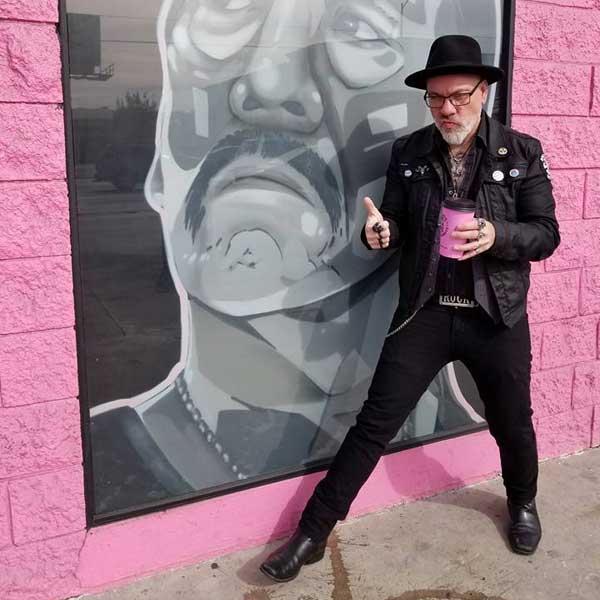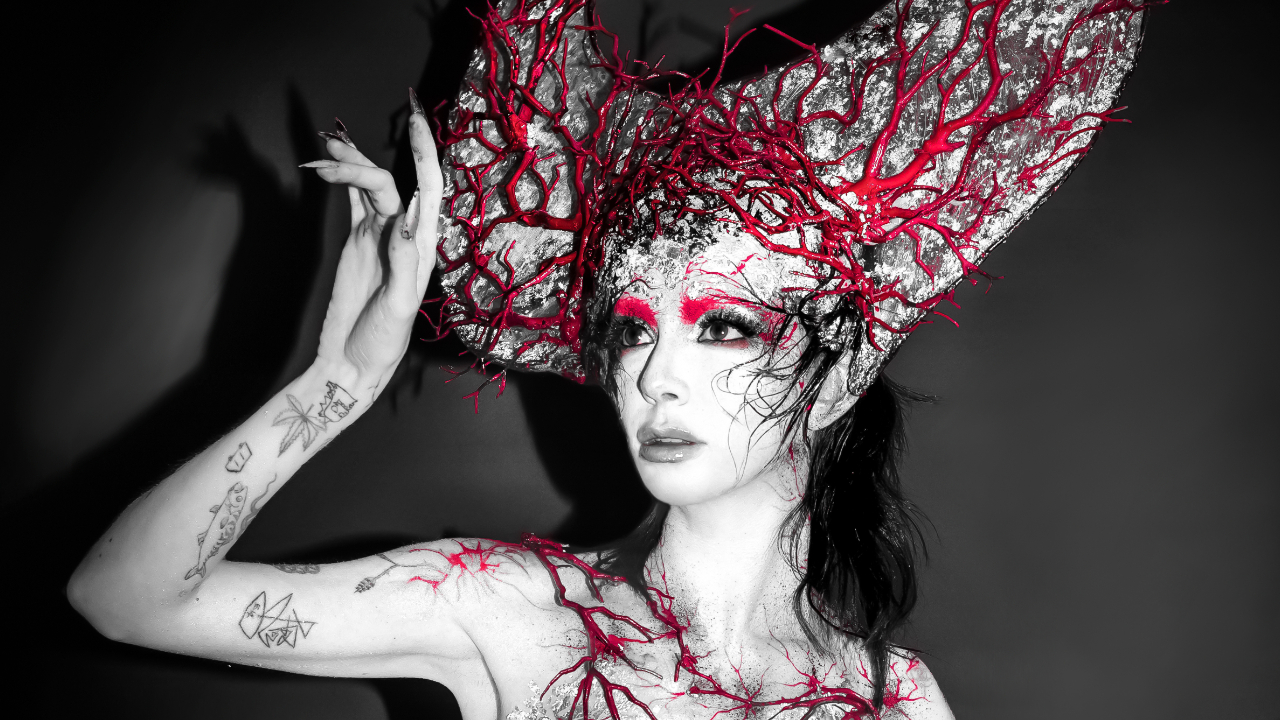Bonded by blood: the birth of the Bay Area Thrash scene
In the early 80s, San Francisco became the epicenter of an extreme new scene. This is the story of the birth of thrash metal

Phil Kettner remembers the first time he saw Metallica live. “My first reaction was, ‘Oh wow, it’s punk rock with long hair,’” says Kettner, who was guitarist with San Francisco proto-thrashers Lääz Rockit at the time. Kettner’s own band were tipped as the Bay Area’s next big thing, but this was something completely new.
Metallica played their first show in San Francisco at The Stone in September 1982. Within a few months, they had relocated to the the city from their native LA, recruiting bass wunderkind Cliff Burton the process. A brand new scene quickly grew up around them, and the Bay Area became the epicentre of the fastest, loudest, heaviest music in the world: thrash metal.
“‘Thrash’ wasn’t used that much as a term in 1982,” says Ron Quintana, one of the architects of the Bay Area thrash scene. Quintana was the editor of the seminal Metal Mania fanzine, which exhaustively covered the San Francisco metal and punk scenes in a rage of caustic humour, slapdash cut-and-paste layouts, and inky newsprint. He was also a DJ at KUSF, a community-run radio station that operated out of the University of San Francisco. “I think it was more in 1984, with speedsters like Exodus, Slayer, Possessed, and Suicidal Tendencies, that we called them thrash and not just metal or punk.”
- Metallica albums ranked from worst to best
- The 10 best thrash metal albums: a buyers guide
- 30 Essential thrash metal bands that aren't the big four
- The story behind Exodus' Bonded By Blood
Regardless of what it was called in its infancy, the sound produced by these early San Francisco bands was like nothing ever heard before. Young, fleet-fingered savages like Metallica, Death Angel, Exodus, Lääz Rockit, Possessed, Blind Illusion and a handful of others were pushing musical boundaries, playing faster and with more intricacy then seemed humanly possible. There were a myriad of places for these bands to play all over the city, at now-infamous clubs like Ruthie’s Inn, Kabuki Theatre, The Fillmore, The Keystone, The Stone and The Mabuhay Gardens, which was host to the equally envelope-pushing hardcore punk scene. There were record stores and hangouts, a healthy college radio scene and a smattering of enthusiastic fanzines covering it all. So how did this happen? Was it the work of perpetual schemer Lars Ulrich and his collection of Angelwitch imports, as is often reported in the annals of metal?
“[SF radio stations] KUSF and KALX were playing extreme metal in 1982, so NWOBHM was old hat by the time,” says Quintana. “Lars and company could play two Diamond Head and one Blitzkrieg song at any audience, but there were two amazing record import stores and tons of Tower LP stores supplying the maniac habits of fans.”
“The independent record stores were great,” says Rob Cavestany, guitarist and co-founder of Death Angel, one of the first and surely the youngest of the Bay Area thrash bands. “There was the Record Exchange and the Record Vault. These were the main shops, where all the metalheads would come down and find the latest new releases and hear about the latest bands. This was even before Metallica, when we were first hearing about bands like Tygers of Pan Tang, Loundness, Riot. Those were the bands we were tripping on.”
Things changed drastically, however, once Metallica came to town. “I don’t know exactly when they formed in relation to when we did,” says Cavestany, “but I do know they made a wave quicker than we did, we were way into them, and were very influenced by them. We saw them play at the Keystone in Berkeley, and it was an eye-opening evening, for sure.”
Sign up below to get the latest from Metal Hammer, plus exclusive special offers, direct to your inbox!
“The shows were always totally packed,” adds Kettner. “There were a lot of sold out shows back then. At the time, we had a manager who was very tenacious about getting out-of-town bands to play. We actually brought Metallica up to play their first show at the Old Waldorf. We did a famous show back in 1983 with Metallica headlining. We supported them, and Exodus opened up. That was at The Stone.”
“There were a lot of future musicians in those crowds,” recalls Quintana. “But there were lots of all types, even posers.”
“We played with Metallica for the first time at the Kabuki Theatre,” says Cavestany. “It was with Metallica and Armored Saint. But we’d been playing for years before that. We started playing out in 1982. I was about 13, 14 years old at the time. Andy [Galeon, Death Angel drummer] was about nine or ten. I mean, we were very young. But there were all-ages clubs going on, there were parties, things like that we played. And the other times, when there was some kind of age restriction, they basically just snuck us in. We played with Exodus, Legacy –who later became Testament – Slayer, Megadeth, Mercyful Fate, Lääz Rockit. And we played with all the punk bands as well.”
Punk Rock was alive and well in San Francisco in 1982, although not all of the metal bands in town embraced it. “It was pretty segregated,” says Kettner. “I’m sure there were people from both those scenes that went to different shows but we didn’t book any shows with, like, Black Flag or TSOL. We never booked shows with those guys, which I regret, because I think it would have opened people’s eyes. That’s where the thrash thing came from, it crossed over from the punk element. Consider the circle mosh and stage diving and stuff like that – that came directly from the punk scene.”
Unlike Lääz Rockit, Death Angel dived headfirst into the metal-punk crossover movement. “We played with a lot of punk bands,” says Cavestany. “That’s how the crossover thing came about, really. We played shows with Cro Mags, GBH, DRI, Verbal Abuse, Suicidal Tendencies, DR. Know – we played with those guys all the time.”
“Poor LA music fans had only hair bands or punk shows, there was no crossover,” says Quintana. “But punks up north went to metal shows, and vice versa. In LA, hardcore punk shows were extremely violent. Suicidal Tendencies couldn’t even play their hometown. They had to come up north to play. That crossover created lots of good, usually friendly competition in the Bay Area.”
By the mid 1980s, the punk influence on the San Francisco metal scene was embraced and championed. But the glam bands? Not so much. “We knew a lot of kids back then who were real adamant about the whole ‘Bang the head that does not bang’ thing,” says Kettner.
“There were glam bands in SF, and some of them were cool guys,” explains Cavestany. “You got Jetboy, Sea Hags, Vain. Davey Vain actually produced our album, Frolic Through The Park (1988). We played shows with some of them in the early days, until thrash got the ‘kill poseurs’ vibe, and then the lines of separations happened, where these kids wouldn’t be caught dead at one of our shows.”
“Like rats, glam was everywhere,” snarls infamous poseur-hater Quintana. “Van Halen was king and even clone bands had big followings, too.”
Exodus, arguably the most musically violent band in the Bay Area thrash movement, were also the most vocal in their hatred of fishnet-wearing glam-rockers, often calling for their fans to “Kill the poseurs”, wherever they may be found. As such, SF thrash shows often devolved into mayhem.
“There was violence going on in the audience, for sure,” says Kettner. “People were throwing each other around, but then you’d go out for a beer afterwards. I’m sure there were a few people that were pointed out for not fitting in within the scene, or for trying to act like something you’re not, and those people would most likely be ostracised and/or beaten in the alley. But I wasn’t witnessing that.”
“It was reality, though,” says Cavestany. “Poseurs did get their asses kicked. Don’t let [original Exodus singer Paul] Baloff catch one of them around.”
“We did get very wild and crazy at points,” says Kettner. “I’m not really sure how to look at all that because on the one hand, yeah, it was crazy and aggressive, but there was a lot of camaraderie at the same time. I just remember thinking, ‘Why aren’t we getting arrested?’”
By the late 1980s, when Metallica, Slayer, and Megadeth had all graduated to arenas, SF thrash began to mutate into different, less punk-derived strains. Second-wave thrash bands like Testament and Machine Head added their own twists, from progressive elements to ‘groove’ into the mix. The original wave of bands were either millionaires, cult heroes, or on their last legs. And then the clubs started to go up in smoke.
“They closed the Kabuki Theatre,” sighs Kettner. “That place was amazing, this huge old theatre. I remember seeing Metallica supporting Raven there, Mercyful Fate… When you went to a show there, you realised just how big this thing was really becoming. I think that’s kinda what killed the scene, in the later 80s and early 90s. The Keystone Berkeley burned down, Wolfgang’s burned down, The Stone burned down…”
“Bands and scenes are cyclical, and being a rather small metro area, Bay Area thrash bands either got signed, moved on, broke up or mutated,” says Quintana. “And few could replace that original energy and power.”
Originally published in Metal Hammer’s Metallica And Thrash Metal special
Classic Rock contributor since 2003. Twenty Five years in music industry (40 if you count teenage xerox fanzines). Bylines for Metal Hammer, Decibel. AOR, Hitlist, Carbon 14, The Noise, Boston Phoenix, and spurious publications of increasing obscurity. Award-winning television producer, radio host, and podcaster. Voted “Best Rock Critic” in Boston twice. Last time was 2002, but still. Has been in over four music videos. True story.

